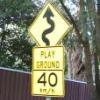The Intercooler Thread
Announcements
-
Similar Content
-
Latest Posts
-
So, Roll Cage for V37 time?! That's a huge mistake. Interestingly I just got my second SMS from St George saying they've made a mistake too and need to send me money. But only $14.93, not as great as yours!
-
Well, I guess that explains the Lumley thing. I got an email the other day purporting to be from Lumley that they had identified an error (no details) and would be providing a refund (including interest)....of $9.4k. Ignored it as obvious spam until the refund actually turned up in my account today. I know I pay a lot per month over the cars and have been with them for 10 years.....but still.....if you really make a mistake that big it might be worth a 2 minute call. ......off to buy some more mods....
-
By Dose Pipe Sutututu · Posted
Could put in a ZF8HP, the short gearing would make it more tolerable until a a 500kW motor package goes in. -
Toyota 86 seats as pretty sweet, but, their lumbar support isn't There is aftermarket air bags that you can fit inside the seat frame though that may fix your current seats, if, the lack of lumber support is the issue See post #8 https://www.gr86.org/threads/adjustable-lumbar-seat-mod.6907/
-
By Murray_Calavera · Posted
I'd say the easiest way is, pick up a extended and baffled sump with fittings already welded on. Here is an example, it has 3 x -10 fittings https://shop.maatouksracing.com.au/products/rb-extended-and-baffled-sump
-










Recommended Posts
Create an account or sign in to comment
You need to be a member in order to leave a comment
Create an account
Sign up for a new account in our community. It's easy!
Register a new accountSign in
Already have an account? Sign in here.
Sign In Now